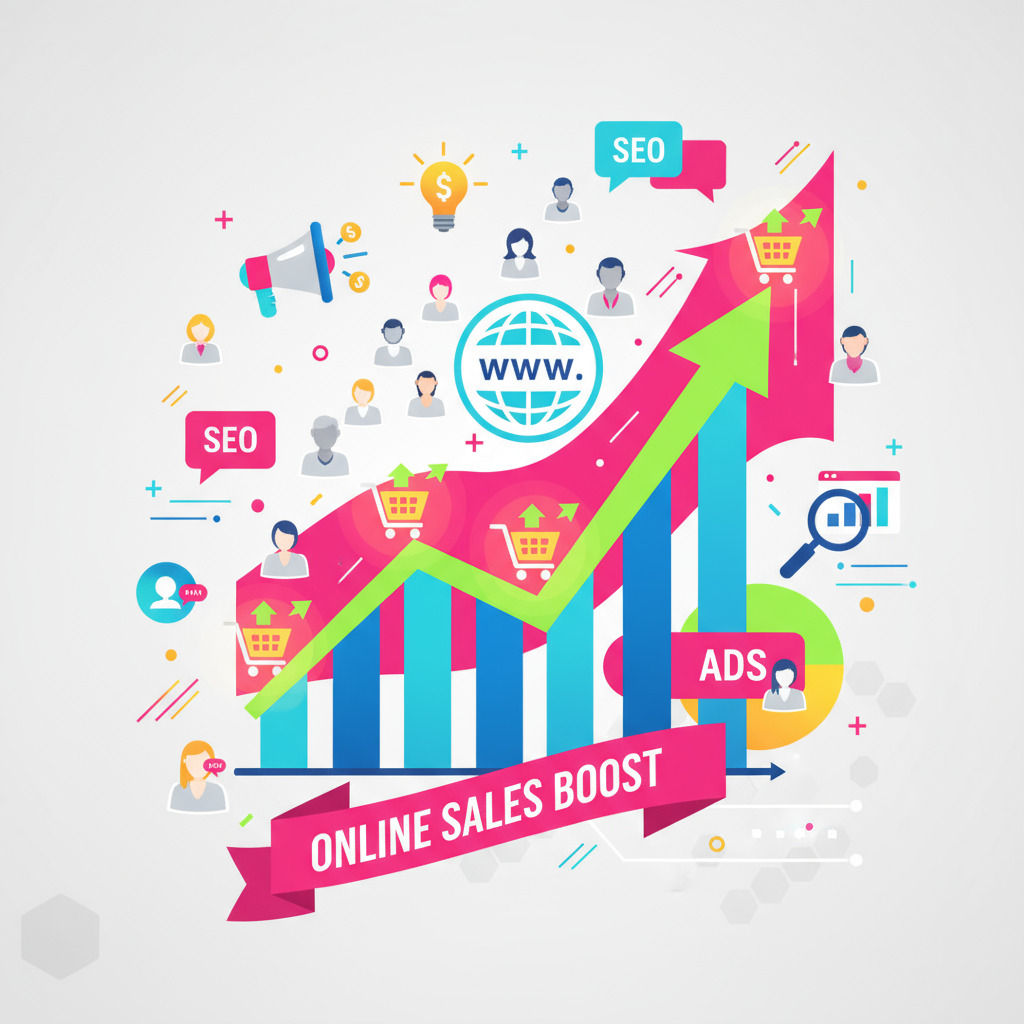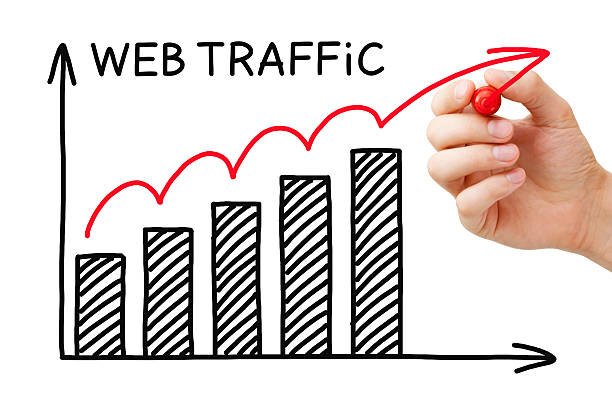
In the twenty-first century, having a website for your business is as important as having an address or a telephone number. Your ecommerce website traffic plays an important role in boosting sales and driving revenue for your store.
Only very local stores escape from this fact. Despite that, most business owners soon learn —and the hard way— that there is a big difference between having a website and actually attracting people to see it.
Web marketers work full time to change that, but it is no secret that requires a significant investment.
Is there any alternative? Yes, there is. It demands time, common sense and some wit, but it can bring you results.
Here, I share with you a simple plan that can help you get started and increase your website traffic organically.
Step 1 – Begin by Setting Your Objectives
If you want to gradually increase your ecommerce website traffic, the first thing you must do is ask yourself what exactly you want to obtain from your site.
You may be tempted to answer “readers!” or “clients!”, but that would not be specific enough. Your plan will work better if you look beyond the obvious and clarify your objectives.
Bloggers, for example, most of the time want readers. Well, what kind of readers suit you best? What kind of visitors can help you grow in the future? Do they have anything in common? Answer these questions and get a more specific answer.
Same happens for business owners. They usually want clients, but what does that mean from your website’s point of view?
Does it mean more accounts created on your online store, more people filling in your contact form, or calling you to get an appointment? More than one option?
For an ecommerce website owner what does this translate to- Landing page conversions, improving customer life time value or making your brand a household name.
Every sound marketing plan starts with clear and specific objectives, and by installing a web analytics software so you can measure your growth. This should be your starting point.

Step 2 – Embrace the Secret to Online Success
The second part of your plan should be to take a deep look at your own website. Why? Because there is one secret to success on the web, and you need to align your site to that secret.
What is the secret? That only those sites that are extremely useful for people become successful.
That is what made Google, YouTube, Wikipedia, and Alibaba famous! Websites that are not extremely useful may coexist, but they never grow as much.
Extraordinary websites are fast, technically correct, and genuinely useful. Is your ecommerce website that?
If yours is not at least three times better than your competitors’, assume you have work to do and a lot of ground to cover.
People notice the difference, and they will always prefer the best site over yours. That can lead to drop in sales and your website not even showing up when potential customers search for products.

Step 3 – Six Ways to Increase Traffic Organically
What can you do to get more visitors on your site? Pay attention to how people move from one web page to another. They do one of these:
They type the URL (because they know it or bookmarked it)
They click on a search engine result
They find it through a link from another web page (like a blog post)
They feel curious about some mention to your site on another site (like a social network)
They received one of your communications (that is, they are your subscribers)
You motivated your users to spread the word about your site
A solid marketing plan pays attention to all these six paths.
Our next steps discuss exactly how to drive traffic to your ecommerce website
Take Action on Each Traffic Source
Make your URL easier to remember
Place your URL on email signatures, business cards, leaflets, and online documents. URLs should be easy to remember and recollect.
Check these parameters described by Google for structuring your ecommerce URLs
Good URL structure design best practices
To optimize how Google crawls and indexes your website, follow these best practices on how to structure your URLs.
General URL recommendations
- Minimize the number of alternative URLs that return the same content to avoid Google making more requests to your site than needed. Google may not realize that two URLs return the same page until after both are retrieved.
- If upper and lower case text in a URL is treated the same by the web server, convert all text to the same case so it is easier for Google to determine that URLs reference the same page.
- Make sure each page in paginated results has a unique URL. We see the most URL mistakes in pagination URL structures.
Add descriptive words in URL paths. The words in URLs may help Google better understand the page.
Recommended:
/product/black-t-shirt-with-a-white-collarNot recommended:
/product/3243
URL query parameter recommendations
Follow these recommendations when using query parameters to help Google successfully crawl and index your site.
Use
?key=valueURL parameters rather than?value, where possible. URL parameters allow Google Search to understand your site’s structure and crawl and index more efficiently.Recommended:
/photo-frames?page=2,/t-shirt?color=greenNot recommended:
/photo-frames?2,/t-shirt?greenAvoid using the same parameters twice. Googlebot may ignore one of the values otherwise.
Recommended:
?type=candy,sweetNot recommended:
?type=candy&type=sweetAvoid internally linking to temporary parameters, such as session-IDs, tracking codes, user-relative values (
location=nearby,time=last-week), and the current time. This can result in URLs that have a short life or duplicate URLs for the same page. To get the best results from Google Search, use long-term, persistent URLs.Recommended:
/t-shirt?location=UKNot recommended:
/t-shirt?location=nearby,/t-shirt?current-time=12:02,/t-shirt?session=123123123
For a detailed guide on how to structure your ecommerce URLs- refer here
Optimize your site for search engines
SEO is critical. Ensure your web server, code, images, videos, and documents load quickly. Every page should load in under three seconds even on slow connections.
Advanced optimization may require a specialist or a complete redesign. Optimized ecommerce content creation increases traffic and rankings.

Get backlinks from other sites
Backlinks remain crucial. Build relationships with other website owners. Be authentic and helpful. Avoid paying for links unless they are clearly sponsored.

Generate curiosity on other platforms
Answer questions on forums, social media, and Q&A websites. Share contrarian views, humor, or detailed research to draw visitors.
Grow your subscribers
Use social media and mailing lists. Offer exclusives, and never spam your audience. Subscribers are your best asset for sustained traffic.
Motivate users to refer others
Occasional referral promotions work best. Avoid overuse to prevent user fatigue.
FAQs
Q: How long to see results from organic traffic efforts?
A: Typically 3–6 months with consistent content, SEO, and backlinks.
Q: Do I need an ecommerce SEO specialist?
A: Basic SEO can be DIY, but advanced tasks and AI-friendly optimization usually require a specialist.
Q: How many backlinks should I aim for?
A: Focus on quality over quantity. A few authoritative links outperform many low-quality ones.
Q: Can AI-generated content help my ecommerce traffic?
A: Yes, if content remains accurate, useful, and human-readable for AEO and LLM ranking.
Q: How often should I update content?
A: Evergreen pages: every 6–12 months. Product pages: monthly if products or trends change.
Q: Are subscribers really that important?
A: Absolutely. Subscribers are your most engaged audience and help grow traffic organically.
Final Takeaways
Define clear objectives: Know what success looks like for your ecommerce site.
Focus on usefulness: Fast, reliable, and valuable websites outperform competitors.
Diversify traffic sources: Combine direct visits, SEO, backlinks, social mentions, subscriber outreach, and referrals.
Invest in content and SEO: Optimize landing pages, content creation, and AEO strategies.
Build backlinks safely: Quality over quantity is critical.
Engage subscribers: Loyal subscribers drive long-term traffic and sales.
Track and update: Use analytics to monitor growth and update content regularly.
